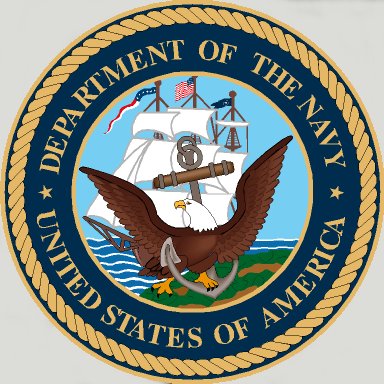NavSource Online:
Civilian Identification Numbered Ships Photo Archive
Ausable (ID 1631)
Love - Fox - Nan - Rush


Ausable served both the U. S. Army and Navy


Ausable served both the U. S. Army and Navy
Specifications:
| Click on thumbnail for full size image |
Size | Image Description | Source | |
|---|---|---|---|---|
 |
135k | Post card showing SS Laura in the locks of the New Entrance at Saint Nazaire, France, before World War I Archives maritimes photo from Shipscribe.com |
Robert Hurst | |
Ausable
A river and a town in Clinton County, New York. Also a French word meaning "sandy."
Laura-a steel-hulled screw steamer built in 1901 by Jan Smit, shipbuilder, of Ablasserdam, Holland, initially voyaged under the Dutch flag for well over a decade and a half before her name was changed to Ausable sometime in 1916 or 1917, probably when she was acquired by the American Transatlantic Co., Inc. After the United States entered World War 1, with the arming of American merchant ships, the vessel apparently received a battery of two 3-inch guns, manned by a Navy armed guard crew.
On 2 February 1918 the United States Shipping Board turned her over to the War Department for use as a cargo transport. Later that same year, on 19 July, Vice Admiral William S. Sims, commanding United States Naval Forces in European waters, was authorized to assume custody of Ausable on a bare-ship basis, manning her with a Navy crew and operating her for the Army.
Accordingly, on 1 October 1918, Ausable-assigned to the Naval Overseas Transportation Service (NOTS) and designated Id. No. 1631-was commissioned at Cardiff, Wales, Lt. Comdr. Charles L. Arey, in command. At commissioning, her armed guard complement became "ship's company," and other Navymen soon supplanted her civilian crew to operate the ship. These changes completed, the ship began loading a cargo of coal the following evening.
Her bunkers and holds full by the morning of 6 October, Ausable embarked 16 American soldiers for passage to France before shifting to nearby Avonmouth to load a deck cargo of tractors. She departed the British Isles the following day, anchoring in Brest Roads, off the port of Brest, France four days later. She then traveled in coastwise convoys to Quiberon Bay and La Pallice before reaching Bayonne on the 19th. There, she unloaded the tractors before steaming to Boucau, a port on the right lit bank of the Adour River, northwest of Bayonne and near the river's mouth at the Bay of Biscay, to unload her coal. On 11 November, Armistice Day, she got underway to return to the British Isles, making port at Barry, southwest of Cardiff, three days later, to onload her cargo.
Underway for Belfast, Ireland, on 23 November, Ausable reached that port two days later, loading coal for transportation across the English Channel. Underway again on the 28th, she headed for France. En route, Ausable sighted the steamer Kilburne drifting, her engines apparently out of commission. Comdr. Arey agreed to tow the ship to Fishguard, a port on the north coast of Wales just off the Irish Sea; and Ausable passed a towline to the distressed ship while sending a wireless message to Fishguard, requesting authorities there to have a tug available to bring Kilburne into port. Proceeding through the choppy sea, the collier towed the British steamer to Fishguard and briefly lay-to until the requested tug arrived to pick up the tow. Her mission of mercy completed, Ausable rang down full speed and proceeded for Bordeaux to deliver her cargo of coal.
Reaching Bordeaux via Verdon-sur-Mer on 6 December, Ausable completed discharging her cargo by the 12th and, two days later, embarked the officers and men from the cargo ship Lake Bloomington-which had run aground on the 11th and had been abandoned as a total loss-for transportation to England. Other transportation was apparently provided, however, for these same men-52 all told-disembarked before Ausable left Bordeaux.
Ausable arrived back in British waters four days before Christmas, dropping anchor in Barry Roads. The ship conducted one additional coal-carrying voyage to French waters-to the port of St. Nazaire, via Quiberon Bay-before departing St. Nazaire with 1,355 tons of general cargo (that included 10 tons of ammunition) on 15 February, bound for the United States.
Ausable steamed past the Ambrose Lightship on 12 March, anchoring in Gravesend Bay that evening. She unloaded her ammunition cargo into a barge on the afternoon of the 13th. Two days later, she shifted to an anchorage off Staten Island, tarrying there briefly before mooring to a dock at New York City on the 16th to discharge the remainder of her cargo. That task completed, she moved to Shewan's Drydocks, Brooklyn, and subsequently to the Erie Docks (also Brooklyn) where her guns were removed. Finally, on the afternoon of 19 April 1919, Ausable was placed out of commission and simultaneously returned to her former owners.
Ausable operated with the American Transatlantic Co. until 1924, when she was sold to the Foreign Transport and Mercantile Corp., also of New York. Renamed Matte Jensen in 1924 or 1925, the steamer served under Danish registry into the late 1920's. Subsequently acquired by an A. Kalnin, of Riga, Latvia, the erstwhile NOTS coal carrier became Kuhrs in 1929 or 1930, and sailed under the Latvian flag until acquired by the Cumbrae Shipping Co. Ltd., an English firm, in 1936 or 1937.
She disappeared from shipping registries during the 1937-1938 period.
| Back to the Main Photo Index | Back to the Civilian Identification Numbered Ships (ID) Photo Index |
| Comments, Suggestions, E-mail Webmaster |
|
This page created by Joseph M. Radigan and maintained by David Wright |